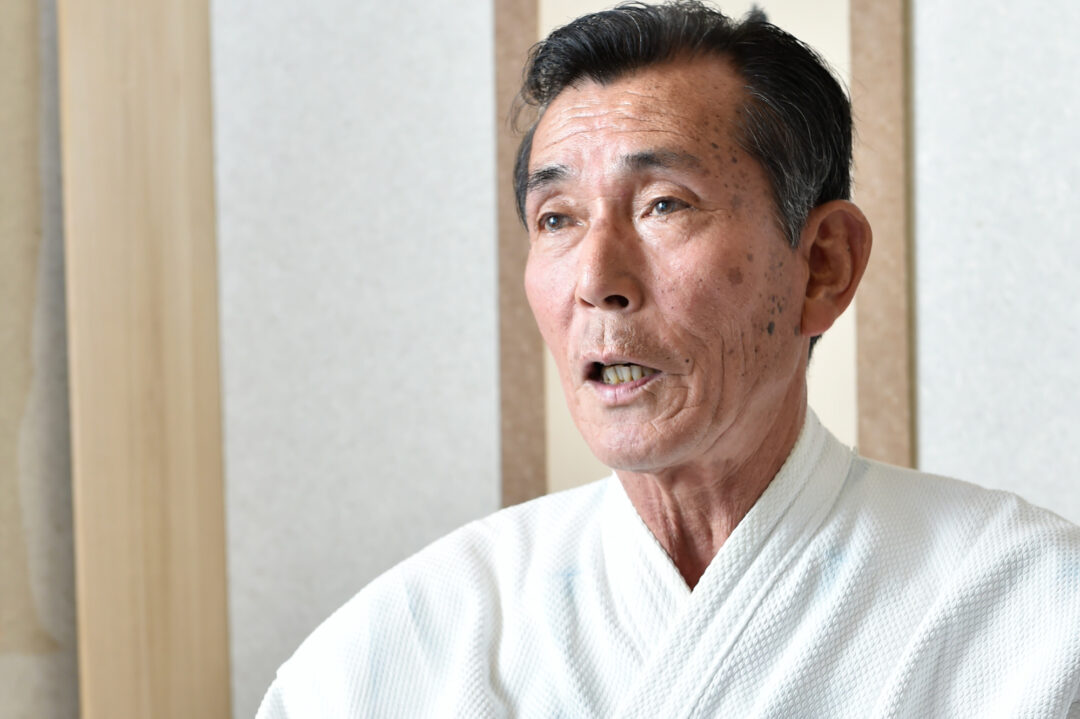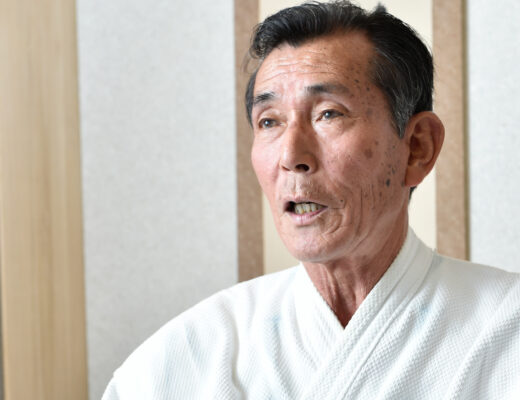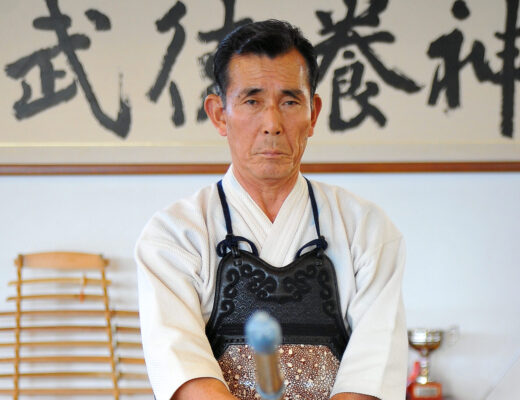Sumi Masatake, 8th Dan Hanshi
Born in Fukuoka Prefecture in 1943. After graduating from Chikushigaoka High School, he moved on to Fukuoka Gakugei University (now Fukuoka University of Education). After graduation, he worked as a high school teacher before returning to his alma mater, Fukuoka University of Education, as an assistant. From 1999 to 2002, he served as a permanent director of the All Japan Kendo Federation. He placed third in the 23rd Meiji-mura Kendo Tournament. He was the ladies’ coach of the Japanese national team at the 11th World Kendo Championships. He is the author of “Training Methods for Kendo by Age,” “Kendo is about basics,” and “Kendo for personal development”. Currently a professor emeritus at Fukuoka University of Education and the head of its Kendo club.
Technical training as a means to an end
How to view Kendo and handle training is an important question. It is possible to set various goals in the process of training, but the educational element of cultivating one’s character through technical training must be taken as an absolute value. I would like to look back on the current state of technical training as a means to an end to verify whether it is sufficient.
From the late 1960s to the 1970s, there was a nationwide boom in Kendo for boys. At the time, there was a great demand for the healthy development of young people. Parents wished to see their children grow up to be good and strong, and had high hopes for the educational effects of Kendo classes, which emphasized discipline and etiquette.
Eventually, as a way to maintain the interest of those who were just starting out, there was a major shift towards enjoying the victory or defeat in Shiai. In-house Shiai practice was insufficient for satisfying the need, so eventually external Shiai became popular, and have continued to this day. The emphasis on competition extends far beyond the necessary limits of maintaining interest from those who are just starting out, even those who are at the beginner levels of 1st Dan to 3rd Dan (who should be laying the foundation for Kendo training), to those who are at 4th and 5th Dan, the emphasis is still on Shiai.
The traditional way of thinking that Kendo should not be run at the end of a competition has been forgotten, and the mainstream of Keiko is now focused on programs and methods to win in Shiai. It would not be an exaggeration to say that there is a widespread misconception that winning skills are acquired through Shai with like minded others, and that the way we view Kendo has changed to one of enjoying the uncertainty of victory or defeat as you would in sports.
In recent years, the trend of winning by striking opponents with irregular maneuvers has deteriorated further, and techniques that focus on defensive movements to prevent being hit have become rampant. Is it not true that as a result, we have fallen into a system of victory supremacy, where only the victor is praised regardless of irregular maneuvers, rather than the aggressively decisive and vigorous attacking spirit of the fighters with faithful implementation of basic movements?
The supremacy of victory should be rejected in sports, where the subtleties of victory and defeat and the athletic development of techniques are enjoyed. The more it is deplorable that the Kendo world, which has the path of cultivation as its philosophy, has fallen into the supremacy of victory as well.
Those who try to win with inappropriate attitudes or inappropriate behavior should be severely reprimanded and encouraged to reflect on their actions, while once more, those who lose in their efforts to follow the true sword should be praised and encouraged to rise.
Improvements should be attempted in the way referees conduct themselves, such as judging strikes to a high standard and taking strict action against unfair behavior. Efforts have been made to improve referees’ methods with the idea that better referees make for better Shiai and Kendo, but no results have been seen. If we do not reconfirm the foundation of Kendo Keiko by focusing on the fundamentals of the teaching method, the future of Kendo will be uncertain.
Why do we call it Keiko?
The rest of this article is only available for Kendo Jidai International subscribers!




